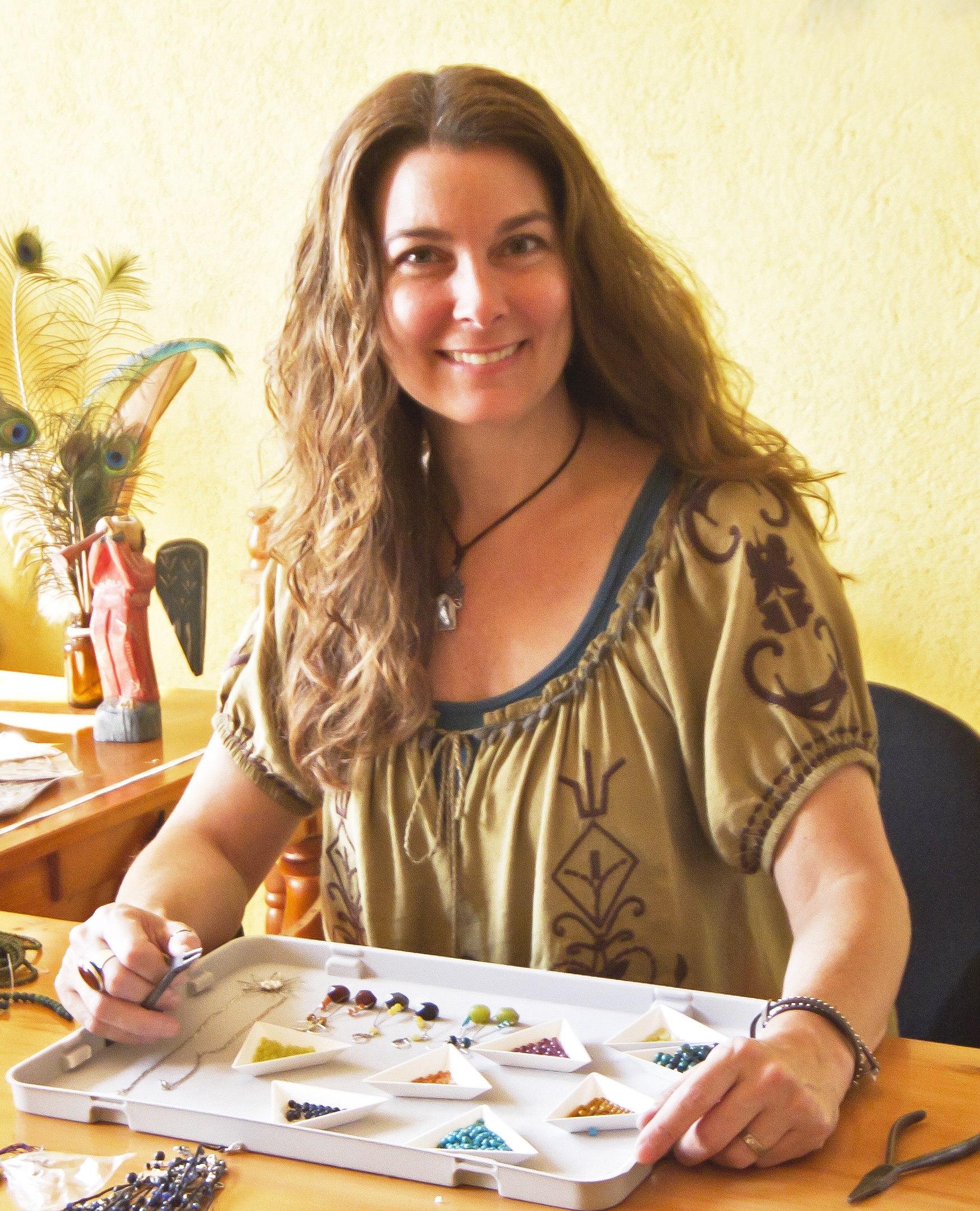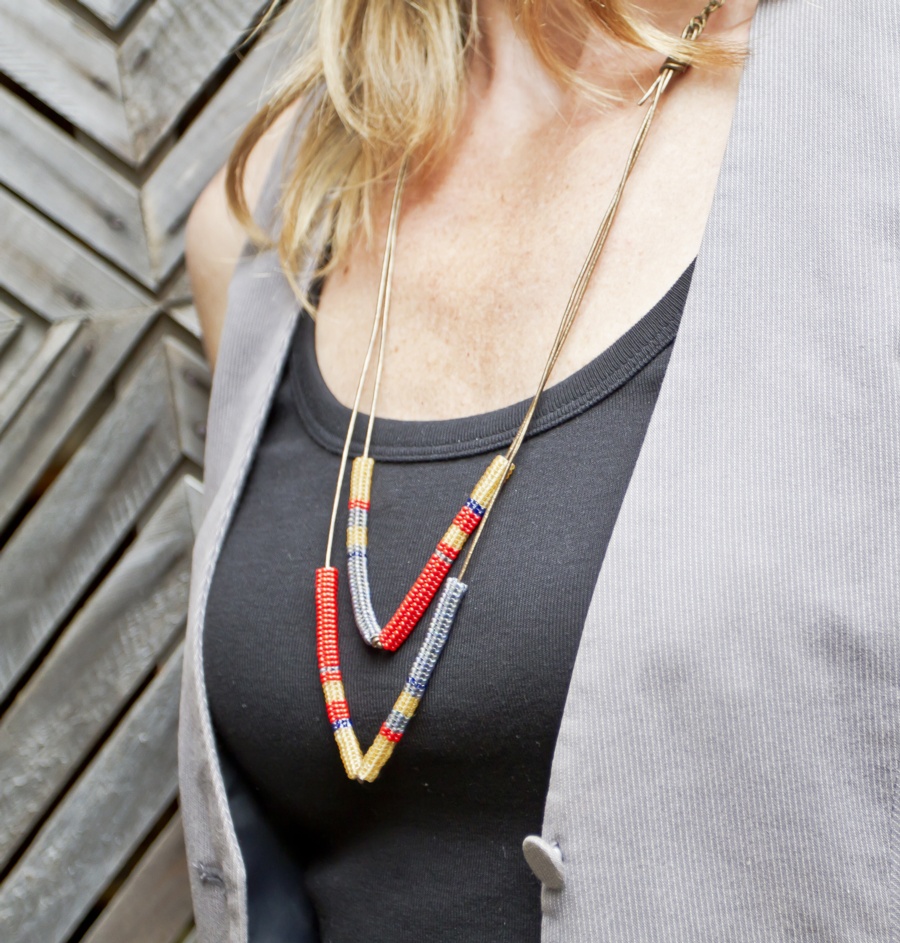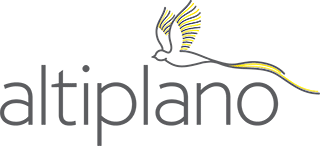Designing Woman – Business Owner and Designer of Handmade Jewelry Launches New Line
Meet Shari Zarin, pictured, co-owner and designer of Altiplano, a small handmade jewelry business with offices in southern Vermont and Lake Atitlan, Guatemala. With her own fair trade workshop and with other cooperatives and small family workshops in Guatemala, Shari designs and produces a line of handmade jewelry, handmade bags and accessories available at www.altiplano.com. In celebration of the launch of her new fall line, we sat down for a chat with Shari about her inspiration, her community and how she manages the sometimes tricky business of working in two countries.

Where do you look for inspiration?
I am most inspired by nature in all its forms. The colors, textures and patterns that I find in the natural world are a constant source of inspiration. Mostly my connection to the natural world feeds my soul, which in turn, of course inspires my work. Perhaps my garden is my greatest muse. I love the thrill of working in a medium that has a mind of its own. There are some plants out there, that want to be, that thrive and make it happen for themselves -- and others that are more passive. I like the challenge and there are some definite similarities with my work in Guatemala and the concept of working with what presents itself.
The more direct inspiration for my work is drawn from Guatemala, the wonderful people, and the rich tradition of weaving that is so prominent in the Mayan world. The Mayan people of Guatemala continue a tradition of handicraft that is passed through the generations. The handwoven fabrics are not only beautiful but culturally meaningful. This sense of tradition and artistic expression has provided a fertile ground for my work. I especially love to work with traditional textiles that are steeped in tradition and significance, and I like to create a juxtaposition with contemporary form. Although I have always been an artist, my bachelors degree is in anthropology.
Is there an artist that inspires you?
I must admit I have a thing for Frida Kahlo. I wear her photo often around my neck and have her paintings surrounding my workspace. As a woman artist in Latin America, I look to her as an inspiration, and identify with her Latin expression. I admire her strength and respect her work as an artist and revolutionary of her time.
As for my favorite contemporary designers, both Orla Keily and Lotta Jandstotter are very inspiring. I just love Orla's mid century aesthetic and her impeccable color sense. Lotta Jandstotter is a wonderful modern designer. I adore her clean and organic Scandinavian style. I'm not sure how it translates to my own work. Mostly I think, it's the fresh departure from what I do that I like so much about them. My work is so influenced by the indigenous art of Guatemala and dictated by the materials and skills available to me.
How do you keep up with the latest fashion trends and how do you combine that with the traditional craft that is so much a part of your work?
I try to keep myself very exposed. I read fashion magazines and design blogs to keep abreast of trends, but mostly, I am inspired by street fashion -- real people and their personal creative expression. I love Bill Cunningham's photos and columns for the New York Times. Before my trips to Guatemala, I try to make it to NY. I love to sit in the parks, watch the people and shop around looking for trends
Where do you find some of your recycled materials and what comes first -- the design or the fabrics?
Using recycled materials is especially inspiring. These fabrics were handwoven and worn by Mayan women and men. Not only are they beautiful, but they carry the spirit of their weavers, the people who wore them and the history of the village from which they are from. Mostly I design around the materials, but there is a great exchange of inspiration. I usually have some goals of bag shapes, and go out in the field to find the appropriate fabrics. This season I focused on geometrics to stay on trend. I have a broad of knowledge of Guatemalan textiles and know several villages that use a geometric design in their textiles. For bigger bags I look for larger blouses or corte skirt fabric. It’s also important to consider the availability of fabrics. Generally, larger villages assure more availability. There are many other nuances, like cost and the intricacies of the weaving. Some textiles are so beautiful and intricate, but are reserved for smaller items due to their cost.
Do you have one piece that you are particularly proud of this season?
I especially like the V-Tube bead and leather necklace. It is the most on-trend piece in the collection and uses the glass beads so effectively. I love the mix of materials, the bronzed leather, and the different looks you get from the different lengths. I think it also the most unusual piece in the collection. It is rewarding, because it was a challenge to get the mechanics right -- to get the two points to line up and to accommodate the extreme adjustability in length to work.

If I can point out another of my favorites, the bamboo infinity scarf is a fabulous piece. This is a collaboration with a wonderful Mayan women's cooperative that we have been working with for about 15 years. They are a talented group of women, weaving on traditional back strap looms. It is rewarding to work with such a capable group, and a pleasure to support them. The fiber is sustainable, organic bamboo, and has an incredibly luxurious soft hand. The craftsmanship is world class, in both dying and weaving, and is a great example of creating a fresh, modern piece using traditional technique. It is an all-around winner- a quality work of art, a meaningful project, and a sustainable fiber.

I'm curious about your workshop in Guatemala? How long have you had your own workshop and how did it come to be? How do you find the artisans that work for you?
Our workshop represents only a fraction of our work force. It is where I work most closely with my staff, and where we utilize most of the materials that I source here in the states. It came, I think, from a frustration with the process in Guatemala and the constant element of surprise. My workshop is where I have the most control of the variables and it is the home base of Altiplano. The atmosphere is very supportive, and amongst the artisans, there is a great sense of pride in our work.
The development of the workshops, like every other aspect of our business, evolved organically -- from the personal help of my main gal, Telma and her family, and on to the local community. Many of our jewelry workers learned jewelry making skills on the job and have flourished as skilled artisans. It brings great pleasure and is a blessing to be able to provide so much employment to the community.
You are running two businesses in different countries, (3 including your retail shop) how do you manage this?
It's a lot of work, and takes many hands. I am very fortunate to share the business and responsibilities with my husband, John. We are the yin and the yang, and I couldn’t do it without him. He handles everything involving numbers, and manages production, shipping and receiving. We are blessed with an amazing and invested staff both here and in Guatemala. Our relationships have been long term, and at this point, I am very aware of how helpful these years of experience are. Also, I continue to travel a lot to make it all happen.
And you are a mom -- did your kids grow up a part of the business?
Yes, I have three amazing children. They have grown up in the heart of the business. They nestled into fabric on my back while I worked, buying materials in the market, or selling our wares at festivals and door-to-door. They made houses in the big shipping boxes and were at home on the cutting table. All of them grew up living part time in Guatemala. They went to school there and were immersed in a very international community. Their nanny Yatun is a Mayan woman, who never had children of her own. She brought them up as her own, and we have maintained a close relationship with her and her extended family. All three of the children feel that deep connection with her and through her, with the Mayan culture. I think this immersion has very much influenced who they are today. They have a global perspective that is difficult to get growing up in Vermont. They know poverty, and the simple life, and I think they found gratitude and compassion at a young age. They also seem to have a strong work ethic, having been brought up around so much work.
As the saying goes "it takes a village....." -- but how did you manage to do it all with two villages?
I am so blessed with my two villages. Both of our homes are in small towns, places where people look after each other. I feel so supported by them both, and in return, I take my responsibility to them both seriously. This is one of my greatest inspirations. We support so many artisans and their families in Guatemala, and knowing that they depend on us keeps me going. Although sometimes it's overwhelming, mostly I feel blessed with the opportunity to make an impact. In addition to employment, we have many opportunities to support our communities. We take pride in donating to Vermont and Guatemalan projects, non-profits, education, and community resources. A full list can be found on our website at https://altiplano.com/giving/.
Please visit https://altiplano.com to view the new fall line designed by Shari.
